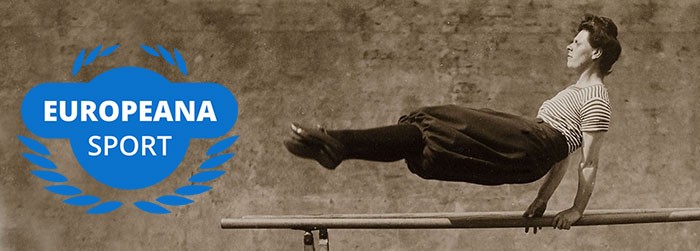How did Věra Čáslavská protest the Soviet invasion at the 1968 Olympics?
The 1968 Olympic Games are remembered today for the 'Black Power' salute when Tommie Smith and John Carlos, two African-American athletes, raised their black-gloved fists in protest while the US national anthem played.
However, at the same Olympics, another participant protested politics, albeit in a more subtle way.
This is the story of Czech gymnastic Věra Čáslavská, whose 1968 protest curtailed her sporting career.
How was Věra Čáslavská a champion gymnast?
Věra Čáslavská was born in 1942 in Prague. By age 16, she was an accomplished gymnast and had already began an international sporting career, taking part in the World Artistic Gymnastics Championships in Moscow. There, she won gold and silver medals.
She first took part in the Olympic Games in 1960. In Rome, she won a silver medal with the Czechoslovakia team.
By the 1964 Olympics in Tokyo, she was a force to be reckoned with - she won four medals: three golds in the Vault and Balance Beam competitions, as well as a gold in the All-around competition and another silver in the team competition. The Japanese hosts gave her the nickname 'darling of the Olympic Games' (「オリンピックの名花」)
Outside the Olympics, her success continued - between 1964 and 1968, she won 19 gold medals in major international competitions. In 1967, she scored a perfect 10.
What happened in Czechoslovakia in 1968?
The 1968 Olympic Games were held in Mexico City in October.
A few months earlier - in August - Czechoslovakia had been invaded by four countries led by the Soviet Union. The invasion aimed to suppress the so-called Prague Spring, a series of liberalisation reforms which Czechoslovak Communist leader Alexander Dubček had attempted to set in motion.
137 Czechoslovakian civilians were killed in the invasion, and 500 were seriously wounded. Around 70,000 Czechoslovak citizens immediately left the country, migrating to Western countries, with many more following in later months and years.
The invasion also had an effect on Čáslavská's preparations for the Olympics. She had supported democracy movements within Czechoslovakia. In 1968, she was one of the signatories of The Two Thousand Words, a reform manifesto written by Ludvík Vaculík.
Due to her vocal opposition, she feared she would be arrested so she spent months training and preparing in the forests of Moravia, rather than a gymnasium. She was only given permission to travel to Mexico at the last minute.
How did Věra Čáslavská protest at the 1968 Olympics?
These make-shift preparations did not seem to affect Čáslavská's dominance in Mexico. She won four gold medals and two silver, winning medals in all six events.
In Mexico, many Soviet gymnasts were not given a warm reception. Čáslavská's floor routine music was Jarabe tapatío (the 'Mexican hat dance') which made her popular with the local audience.
Before the Games, Čáslavská stated that she would 'sweat blood to defeat the invaders' representatives'. Despite her many victories, Soviet gymnasts affected the outcome for Čáslavská.
Čáslavská appeared to win the floor competition outright with a score of 9.9. However, the judging panel unusually upgraded the scores of Soviet gymnast Larisa Petrik, bringing her level with Čáslavská. They shared the gold medal. Earlier, another judging decision had cost Čáslavská a gold medal in the balance beam - she won silver, with Soviet Natalia Kuchinskaya taking gold.
Both of these decisions clearly angered Čáslavská - not just personally, but also politically.
During the medal ceremonies for both, as the Soviet national anthem played and the flags were raised, Čáslavská quietly protested by holding her head down and away.
What was the aftermath of Věra Čáslavská's protest?
Many Czechoslovakians respected Čáslavská's actions. In 1968, she was awarded Czechoslovakia's Sportsperson of the Year award for the fourth - but final - time.
HOwever, her protest was not appreciated by the authorities.
Because of this, she was not given the right to travel to participate in public sport events both at home and abroad, effectively forcing her into retirement.
During the 1968 games, she had married Josef Odložil, a Czech runner. Their daughter was born in 1969, and a son in 1974. Through the 1970s, Čáslavská worked in various jobs - including as a cleaner, a far cry from her previous sporting success.
Věra Čáslavská's later years
In the 1980s, particularly after the Velvet Revolution of 1989, Čáslavská's professional prospects improved. She became an advisor to President Václav Havel on sports and social matters, and was the chair of the Czech National Olympic Committee.
In 1993, Josef Odložil - now her ex-husband - died after an argument with their son Martin. This, combined with ill health, led to depression which meant that she was rarely seen in public.
Through the 1990s and following decades, however, Čáslavská's legacy was recognised with a number of accolades, awards and titles - reflecting her status as the most decorated Czech gymnast ever and an athlete with courage and dignity.
Vera Čáslavská was diagnosed with pancreatic cancer in 2015, and died in Prague the following year, aged 74.
Share your sport story
Can you help us to tell the story of sport in Europe in the past and the present?
We invite you to tell us about your sport experiences through objects like photographs, memorabilia, equipment or prizes.
Share your story →
This blog is part of the Europeana Sport project which showcases cultural treasures relating to sporting heritage in Europe.

